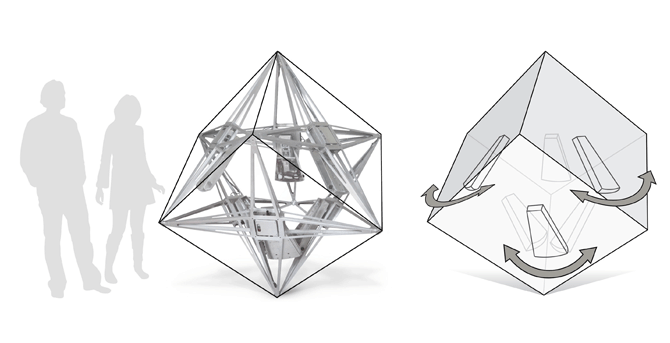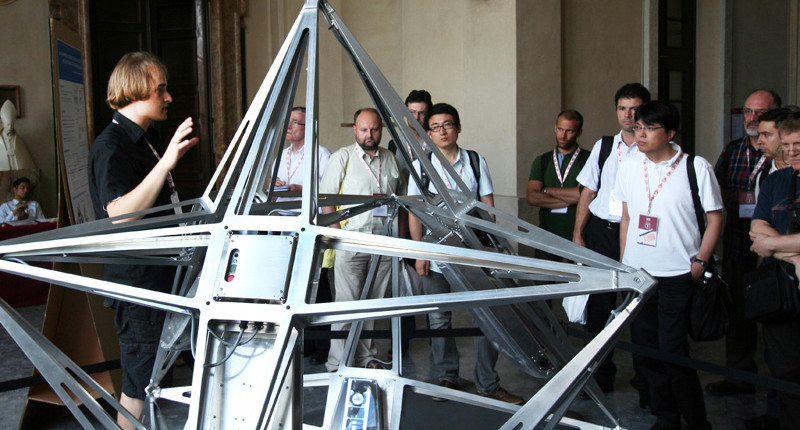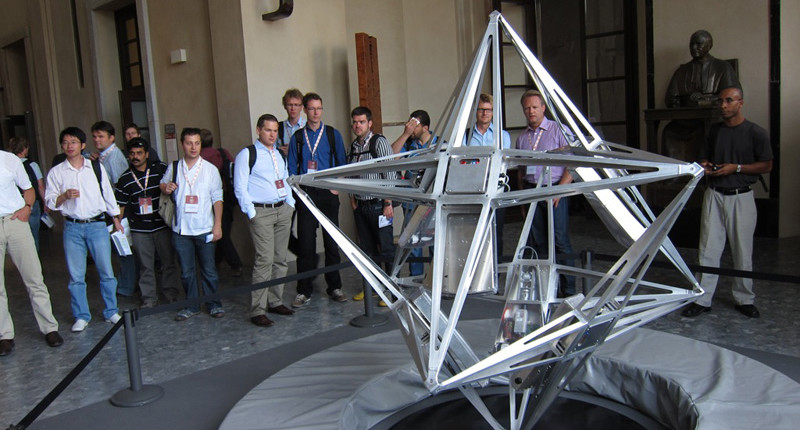BALANCING CUBE
Main Collaborator: Sebastian Trimpe
The Balancing Cube can balance on any of its edges or corners, thanks to a series of six rotating mechanisms located on each face of the cube. Like individual members of an acrobatic troupe, each mechanism coordinates with the others, pushing, pulling and adjusting its own center of balance to keep in equilibrium.
Each balancing mechanism is a self-contained unit with onboard power, sensors, computer and motor. Data captured from the mechanism’s sensors is sent to its computer. The computer combines its own sensor data with data received from its peers to issue appropriate commands to the motor. The motor applies torque to the balancing mechanism, which rotates and adjusts the center of gravity of the overall system.
The torque also directly affects the motion of the cube, making balance a particularly challenging problem: the applied torque and the change in the center of gravity of the system are often in conflict. This is similar to the problems that tightrope walkers face when they adjust their balancing pole.
The diagram below is helpful in visualizing why it is called a cube: the corners are simply the corners of a cube. A more common term for this shape is the star tetrahedron; less common is the stellated octahedron. It is also called the MerKaBa by those seeking spiritual enlightenment.

Information on the research conducted with the Balancing Cube…




